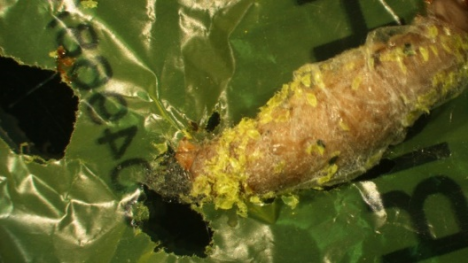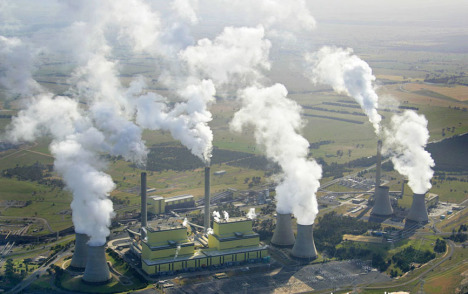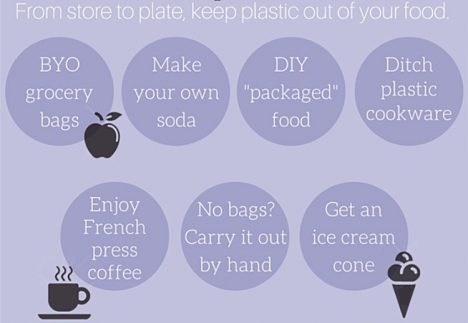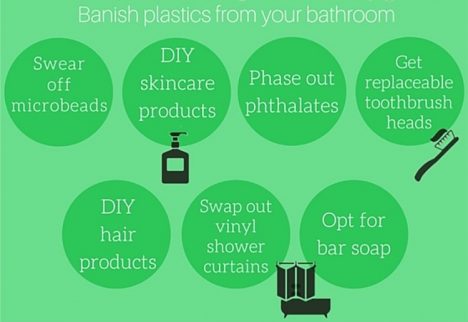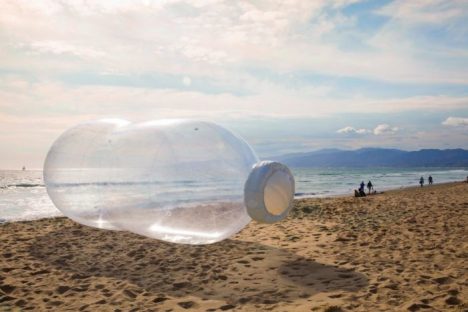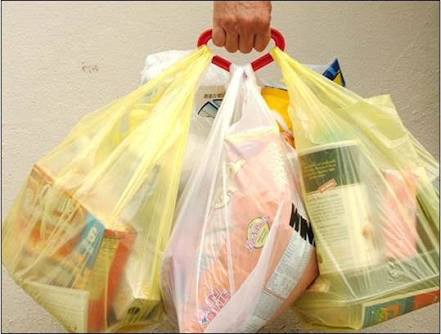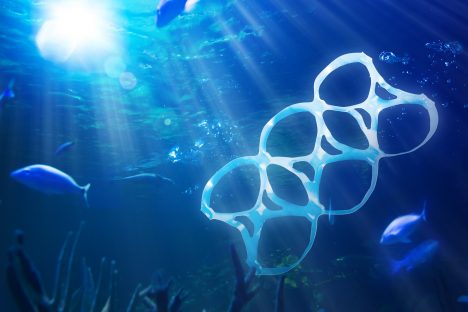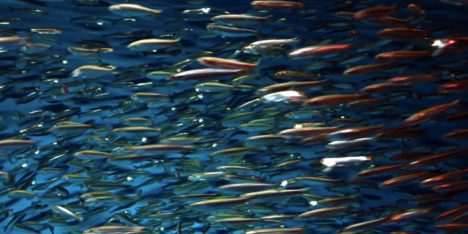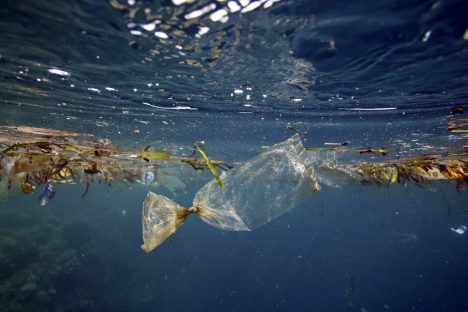All posts by Admin
- 06 Apr, 20
- by Admin
- in Uncategorized, Youth Awareness
-
 0
0
-

 0
0
Scientists are learning more about a caterpillar that is very hungry for plastics!
The plastic-munching abilities of the greater wax moth caterpillar were first discovered in 2017 when a scientist and amateur beekeeper put some of the insects, who also eat beeswax, into a plastic bag only to discover that they had eaten their way out. Now, researchers at the University of Brandon have discovered that the larval greater wax moths can survive solely on polyethylene — the type of plastic that makes grocery shopping bags.
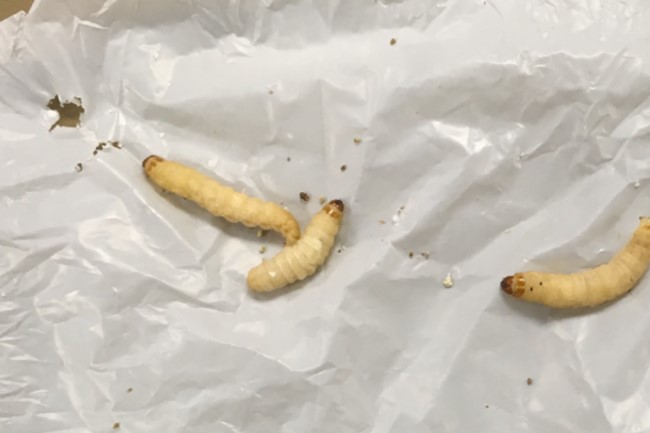
“They are voracious feeders during these larval stages,” lead study author and Brandon University associate biology professor Bryan Cassone told USA today
- 20 Mar, 20
- by Admin
- in Climate Change, Uncategorized
-
 0
0
-

 0
0
We’re all too aware of the consequences of plastics in the oceans and on land. However, beyond the visible pollution of our once pristine habitats, plastics are having a grave impact on the climate too.
Newly published research calculates that across their lifecycle, plastics account for 3.8% of global greenhouse gas emissions. That’s almost double the emissions of the aviation sector. If it were a country, the “Plastic Kingdom” would be the fifth-highest emitter in the world.
Demand is set to rise, too. At 380m tonnes a year, we produce 190 times more plastic than we did in 1950. If the demand for plastic continues to grow at its current rate of 4% a year, emissions from plastic production will reach 15% of global emissions by 2050.
Plastic across the lifecycle
More than 99% of plastics are manufactured from petrochemicals, most commonly from petroleum and natural gas. These raw materials are refined to form ethylene, propylene, butene, and other basic plastic building blocks, before being transported to manufacturers.
The production and transport of these resins requires an awful lot of energy – and therefore fuel. Greenhouse gas emissions also occur during the refining process itself – the “cracking” of larger hydrocarbons from petrochemicals into smaller ones suitable for making plastic releases carbon dioxide and methane. According to the study, about 61% of total plastic greenhouse gas emissions comes from the resin production and transport stage.
A further 30% is emitted at the product manufacturing stage. The vast majority of these emissions come from the energy required to power the plants that turn raw plastic materials into the bottles, bin bags and bicycle helmets we use today. The remainder occurs as a result of chemical and manufacturing processes – for example, the production of plastic foams uses HFCs, particularly potent greenhouse gases.

Ignition of trapped methane pockets in landfills can set off massive fires, releasing the carbon stored in plastic.
The remaining carbon footprint occurs when plastics are thrown away. Incineration releases all of the stored carbon in the plastic into the atmosphere, as well as air pollutants such as dioxins, furans, mercury and polychlorinated biphenyls, which are toxic and damaging to human health.
As plastics take centuries to degrade, disposal in landfill makes only a small contribution to emissions in theory. However, as much as 40% of landfill waste is burnt in open skies, dramatically speeding up the release of otherwise locked-up carbon.
Making plastic climate-friendly
If we are to combat climate breakdown, reductions in plastic emissions are clearly needed. Thankfully, the solution with the biggest potential is already in motion, albeit snow. In showing that transitioning to a zero carbon energy system has the potential to reduce emissions from plastic by 51%, the study provides yet another reason to rapidly phase out fossil fuels.
However, beyond urgently required global decarbonisation, we need to reduce our seemingly insatiable demand for carbon-based plastic. Increasing recycling rates is one simple way of doing this. The highest-quality plastics can be recycled many times, and nearly all plastic can be recycled to some extent – but only 18% was actually recycled worldwide in 2015. Although each recycle process requires a small amount of new plastics, we can greatly increase the life cycle of the material by efficiently reusing what we make.
A more fundamental solution is to switch to making plastics from biodegradable sources such as wood, corn starch, and sugar cane. The materials themselves are carbon neutral, although renewable power is essential to eliminate the climate impact of energy costs during production, transport and waste processing.
However, a massive ramping up in the production of bioplastics – which currently make up less than 1% of total plastic production – would require vast swathes of agricultural land. With the population set to arise dramatically, increasingly coveted arable space may not be able to satisfy demand.

The bottom line, therefore, is that we will need to reduce our demand for plastic. According to the study, simply reducing the annual growth in plastics demand from 4% to 2% could result in 60% lower emissions from the sector in 2050. While a life without plastics may seem unimaginable, its worth remembering that their prevalence is a relativity recent phenomenon. The first artificial plastic, Bakelite, was developed in 1907, but it wasn’t until the 1950s that the age of plastic began. If we show a genuine appetite to address plastic pollution, the world could change again just as quickly.
Governments, corporations, and individuals must make research into alternatives a priority, and support alternatives to needless plastic waste. Were most people to carry a reusable water bottle, for example, we could eliminate the need for the estimated 20,000 single-use bottles bought each second around the world.
Of course, any of these solutions alone will not be enough. As the recent study notes, only by combining reduction in demand, top-notch recycling, decarbonisation of energy, and large-scale adoption of bioplastics can we tackle plastic’s contribution to the climate crisis. But if we manage to do all of this, then we can cut plastics emissions to just 7% of current levels.
Plastics need not be completely demonised as environmental scourges. Affordable, durable, and versatile, they bring a raft of societal beefits, and will undoubtedly serve an important role where replacements are unable to be found. But decades of unbridled use and a throw-away culture are having grave consequences that go far beyond the visible pollution of our land and water. It is essential that we drastically reduce our use of avoidable plastics, and eliminate the carbon footprint of the ones we need to use. Our relationship with plastic may be toxic, but it doesn’t need to be forever.
- 05 Apr, 19
- by Admin
- in Disposable Bag Reduction
-
 1
1
-

 0
0
Re-think Your Kitchen
# BYOB—Bring your own (grocery) bags. If you need to buy some new ones, look for bags that are cotton or hemp. Or make bags of old T-shirts, cheesecloth or any leftover fabric.
# Avoid soda bottles by making your own carbonated drinks. There are plenty of carbonators available, add your favorite flavors and juices into the carbonated water and that’s it. More…
- 01 Apr, 19
- by Admin
- in Disposable Bag Reduction
-
 0
0
-

 0
0
Re-think Your Bathroom
# Abstain from microbeads. Check the labels of exfoliating products like face scrubs and your toothpaste and make sure they don’t list ingredients like polyethylene and polypropylene.
# Make your own homemade nontoxic cleansers and exfoliators. (See: http://www.rodalewellness.com/living/diy-skin-care) More…
- 26 Mar, 19
- by Admin
- in Uncategorized
-
 0
0
-

 0
0
Since the year 2000, we’ve used more plastic than in all the years before.
On average, we each use 53 kilograms of plastic a year and generate a collective total of more than 300 million tonnes of plastic waste.
By 2030, this is predicted to double, with the brunt of the impacts expected to hit our ocean.
These are just some of the figures to come from WWF’s global plastic report, solving plastics through accountability, released today.
The report urges policy makers to draft a global, legally binding agreement to stop plastic entering marine environments, and to establish strong national targets to cut down on plastic use.
About 40 per cent of plastics we consume today are single-use — things like cutlery, plates, food containers, electronics packaging.
Single-use plastics simply have to go, according to Richard Leck, WWF’s Head of Oceans and Sustainable Development.
“In terms of the calls to action, absolutely the ban around single-use plastics is very important,” he said.
“There needs to be incentives for producers to use products that aren’t single use.”
And WWF isn’t alone.
This week, Hobart City Council voted 8-4 in favour of phasing out single of plastics by 2020, and a Senate inquiry last year recommended a national ban to be implemented over the next five years.
In what he described at the time as a “rare display of political consensus”, Greens Senator and inquiry chairman Peter Whish-Wilson said the Senate had “laid down a clear pathway for Australia to create a circular economy and stop piles of plastic, paper and glass being stockpiled or heading to landfill”.
But what would that actually look like?
Producers must be responsible for cleaning up waste
Single-use plastics have become so ubiquitous it’s hard to imagine doing things any other way.
Somewhere along the line we’ve constructed a system in which it makes more sense to mine the oil to make the plastic cutlery to use once and throw away, than it does to put our steel cutlery in a dishwasher.
The way forward is to transition to a circular economy, where everything is made to be reused, according to Candice Quartermain, founder and CEO of Circular Economy Australia.
“The fact that we’re seeing stats coming out now saying there’s going to be more plastic in the ocean than fish by 2025 is insane,” she said.
“Circular economy is changing the economy entirely as we know it. It’s really about saying we can’t carry on the way that we are, something has to change, and the focus needs to be on quality and finding more effective ways of doing things.”

In creating plastic we’ve effectively designed a material that is too good. It’s cheap, versatile and lasts a long time.
To help shift us towards a circular economy, single-use plastic needs to be more expensive to produce, according to Mr Leck.
For that to happen, producers need to be accountable for the entire lifecycle of their products.
For instance, a soft-drink bottle floating in the ocean must be the property of the company that made the bottle, and they must have factored in the cost of retrieving the bottle into their business model.
“The issue around plastic is the classic example of ‘who pays?’ At the moment, the polluters aren’t paying,” he said.
“We have to make sure that the cost of plastics to nature is incorporated into the price.”
While plastic is cheap for manufactures to produce, the UN Environment Program estimates ocean plastic pollution costs around $US8 billion each year through impacts on things like fisheries, tourism and maritime operators.
Plastic is more expensive to recycle than it’s worth

But if manufacturers cleaning up their waste sounds far-fetched, it’s already happening in parts of Europe, according to waste management expert Helen Millicer.
She’s been touring Europe on a Churchill Fellowship, and said parts of Europe are already making huge strides toward achieving a circular economy.
“Companies that don’t design or enable products to be reused or recycled, are penalised,” she said.
The European Commission is now phasing out plastic cotton buds, cutlery, plates, straws and drink stirrers in all member states. Single-use plastic bottles with detachable lids are also being banned.
A European Commission statement has outlined a shift in responsibility from consumers and onto producers for the entire lifespan of their products, from their production right through to disposal.
“Producers will help cover the costs of waste management and clean-up, as well as awareness-raising measures for food containers, packets and wrappers, drinks containers and cups, tobacco products with filters, wet wipes, balloons, and lightweight plastic bags,” an EU Commission statement said.
“The industry will also be given incentives to develop less-polluting alternatives for these products.”
For its part the Australian Senate report included a stipulation that the Federal Government have mandatory targets for the inclusion of recycled materials in its procurement process.
Recycling industry leaders have previously criticised states and the Federal Government for using virgin materials in projects like road and infrastructure building, while recycled stockpiles have been growing higher.
And Senator Whish-Wilson called for more incentives for businesses to use recycled products, after last year’s inquiry.
“Without incentivising domestic markets for the end-use of these waste streams it will keep piling up at rubbish tips around the country,” he said.
Incentives are needed to balance the market.
According to WWF, the cost to recycle plastic in Europe is almost double what that plastic is then worth.
Can we imagine a waste-free world?
While market-based mechanisms will be the most effective method for driving change, some US based artists have been taking a more conceptual approach to the issue.
The size of the installations are equal to the average amount of plastic cups, bottles and straws that each American uses in a year.
Feeling frustrated by the lack of action by her own government, Ms Cruder said she wanted to make something “so freaking big” they couldn’t ignore it.
“We’re not blaming anyone,” Ms Cruder said.
“We’re asking people to pay attention to their behaviours and examine them, [but] I think most people don’t know where to start.”
While reimagining a world without single-use plastics might be hard, doubling the world’s plastic pollution by 2030 will be worse, according to Mr Leck.
The Great Pacific Garbage Patch in the North Pacific Ocean contains about 78,000 tonnes of plastics, according to the latest estimates.
It’s one of five massive ocean greys rapidly accumulating plastic waste.
“We use the analogy that, imagine if there was about 8 million tonnes of oil being pumped into the oceans each year, there would be a massive public outcry,” Mr Leck said.
“If the global plastics system is left to function as it does currently then the plastic pollution crisis risks spiralling out of control.”
- 06 Dec, 18
- by Admin
- in BYOB Campaign, Disposable Bag Reduction
-
 0
0
-

 0
0
Despite a few hiccups along the way, Australia’s plastic bag consumption has dropped drastically.
Three months after two of the largest supermarket chains banned plastic grocery bags, an estimated 1.5 billion bags have been prevented from use, the Australian Associated Press reported, citing the National Retail Association.
Overall, the bans introduced by Coles and Woolworths last summer resulted in an 80 percent reduction in the country’s overall use of the single-use item, the retail group revealed.
“Indeed, some retailers are reporting reduction rates as high as 90 per cent,” National Retail Association’s David Stout told the news service.
Initially, some customers felt “bag rage” about having to BYO-bag or fork over 15 Australian cents (11 cents) to buy a reusable one. Woolworths execs blamed slumping sales on “customers adjusting” to the plastic bag ban. Coles even briefly backed down on the bag ban and caught a lot of flak from environmentally conscious shoppers for giving away reusable plastic bags.
But the good news is that it seems most Aussies haven’t found it too hard to adjust to the change—and that’s fantastic for our landfills, oceans and the greater environment, which have become dumping grounds for our plastic waste.
Stout applauded the progress but shared hopes that the Australian government will get behind a nationwide ban. New South Wales, the nation’s most populous state, is the only state that has not legislated to phase out single-use plastic bags.
There has been a growing movement to ban or tax these bags. Around the world, at least 32 countries have bans in place, according to reusable bag company ReuseThisBag.
“We’re still seeing a lot of small to medium bags being used, especially in the food category, and whilst I get some comfort that the majors have done this voluntarily I think there still needs to be a ban in place,” he told the Australian Associated Press.
“For business, for the environment, for the consumer and of course even for councils which have to work to remove these things from landfills, there’s a multitude of benefits on a whole to doing this.”
- 05 Dec, 18
- by Admin
- in BYOB Campaign, Climate Change, Ocean Conservation, Youth Awareness
-
 0
0
-

 0
0
Plastics have much to offer as a modern convenience, but lack of responsible plastic waste management habits can lead to potentially harmful environmental effects. Past environmental initiatives revealed a lack of understanding about youth attitudes towards pro‐environmental issues. Plastic, an online public environmental promotional campaign, encouraged youth to recognize the importance of, adopt positive attitudes towards and subsequently adopt the practice of responsible plastic management. We propose the Temporal Incentives Model of Social Influence to guide social campaign design. A pre‐post quantitative research design showed that the pre‐contemplation, contemplation and preparation stages progressed significantly after the campaign. The findings suggest that stimuli incorporating specialized information and small action steps allow migration to successive stages. With the strong presence of internet culture among youth, the online medium was found effective in altering the attitudes of the campaign target audience, while exposure to the campaign messages proved useful in encouraging environmental learning among youth.
- 14 Sep, 17
- by Admin
- in Disposable Bag Reduction, Ocean Conservation
-
 0
0
-

 0
0
We know our oceans and coastlines are choking on plastic. We’ve all seen plastic bottles, food wrappers and plastic bags polluting beaches, and been horrified by the stories of marine creatures like seabirds and whales starving when their stomachs become packed full of plastic. More…
- 05 Sep, 17
- by Admin
- in Disposable Bag Reduction, Ocean Conservation
-
 0
0
-

 0
0
We know that the massive amount of plastic that’s continually dumped into our oceans can end up in the stomachs of marine species (and ultimately on our plates), but why would they want to eat it?
Well, new research suggests that fish are not just accidentally gobbling up our plastic trash—they could be actively seeking it out because they like how the debris smells and are confusing it for their natural prey. More…
- 28 Aug, 17
- by Admin
- in Disposable Bag Reduction
-
 0
0
-

 0
0
Plastic pollution is suffocating the ocean and the animals that call it home. Researchers estimate there are now more than 5.25 trillion pieces of plastic in the ocean and the number grows every day. This pollution is ravaging our marine ecosystems, entangling and choking wildlife such as seabirds, dolphins, fish and turtles. Plastic never biodegrades, it only spreads and it’s now polluting every part of the ocean—from beaches, reefs and deep ocean trenches to the frigid waters of the Arctic. More…
